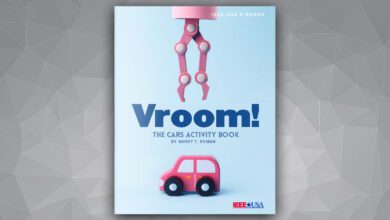
As I boarded a plane a few days ago, I was glared at — not greeted — by a grumpy flight attendant who first glared at me, then the passenger behind me, and the passenger behind him, and the next one. During the safety presentation, she unbuckled that seatbelt like she hated it.
How long did it take me to develop an impression of her? A few seconds? Faster? We size people up quickly. And they do the same about you.
When do we size others up? Often. In professional settings, we usually think of the importance of making a positive, competent first impression at a job interview. Sure, that matters, but there are plenty of other times, such as when you meet a new client or walk up to the front of the room and begin to give a presentation. How about when you sit down for a one-on-one with your new manager, the one you now report to thanks to the latest reorg? Or a networking meeting over coffee with a colleague of a colleague? Or that project kick-off meeting when you first get together with the new team?
On these occasions, you’ll be sizing other people up, and they’ll be doing the same of you — in a blink, which as it happens is the title of a book by Malcolm Gladwell (“Blink: The Power of Thinking Without Thinking”). In it, he says that our “adaptive unconscious” is the part of our mind that leaps to conclusions about others. The adaptive unconscious is apparently capable of processing a lot of data quickly and making decisions without hesitation. Gladwell cites as an example that if you’re crossing the street and a truck is heading straight for you, you don’t have time to analyze your options. That’s when the adaptive unconscious kicks in and — without thinking — you know what to do.
Two seconds is how long it takes the adaptive unconscious to form an impression, positive or negative, of anything — including the person you just encountered. That’s why it’s important not to let your inner grumpy flight attendant be your outer default, because two seconds is all it takes for someone to decide that’s essentially who you are.
How is it possible to assemble the information you need to make a complex judgment so quickly? Gladwell calls it “thin-slicing,” the remarkable “ability of our unconscious to find patterns in situations and behavior based on very narrow slices of experience.” They may be narrow slices, but they’re our narrow slices and we trust what we know.
Given how thoroughly it appears we rely on our cognitive ability to make these snap judgments, it becomes a bit clearer how wearing the effects of that bad day (no doubt the flight attendant’s problem) on your sleeve serves no one. For one thing, it doesn’t improve your day, it amplifies it. But from the standpoint of first impressions, it doesn’t make people sympathetic; it makes them withdraw because they’ve snap-judged you as unpleasant to them, and they’re right.
Practical Tips for a First Impression
So what can you reasonably do in the few seconds you have at your disposal to make an impression?
You think I’m going to tell you to smile, don’t you. That’s what typical first impression advice starts with: smile and the world smiles with you. Yeah, maybe. And if you’re naturally a smiley person, go for it. But what if you’re not?
Eye Contact
Try this instead: in that first second or two, look at the other person as if they matter. That’s what eye contact is all about, really. Acknowledging their presence, their importance, makes a positive impression. That’s why looking down or away, drawing inward, speaking too quietly to be heard makes a poor impression — because those actions are “all about me.” You want to elevate the other person by connecting with them, warmly, and in western culture eye contact is a quick way to do that.
Appearance
How you look is something else you can pack into those first few seconds. A story in the Wall Street Journal a couple of years ago describes an interview for a digital marketing job at a California clothing company. The candidate arrived wearing high heels and a black suit for her interview with the Birkenstock, all-cotton clad execs. How many seconds do you suppose it took them to decide she wasn’t the candidate they were looking for?
It’s customary to pay attention to attire during job interviews, but you could be wasting an opportunity to cash in on that two-second initial impression by not focusing on your attire at other times. Try turning up your attention to appearance one notch the next time you’re scheduled to make a presentation. It doesn’t have to be much, but just enough to make a subtle difference. Ditch the sneakers. Leave the hoodie at home, even if it’s raining.
Client meetings, meetings with the C-suite, and meetings with vendors are all occasions to turn up the attention to appearance. Also remember that the west coast tends to be more casual than the east coast — good to know if you’re used to wearing jeans and you’re headed to a meeting on Wall Street.
Bottom line: always be presentable, not wrinkled, slouchy, or mismatched. In those first few seconds, there will be time-slicers snap-judging you who believe that how you look conveys how you feel about what you’re doing.
Your Intro
Most of us pay very little attention to what people tell us about themselves. When was the last time you remembered someone’s name after they introduced themselves?
If you want to make a positive impression, freshen up your intro. The forgettable way to introduce yourself sounds something like this: “I’m John Jones and I’m a database administrator. I’ve been a DBA for seven years, and I’ve worked here for three years.” After a round of a dozen intros that sound more or less like this, no one remembers anyone.
If you’ve read this column before, you may know that I’m a proponent of freshening up language, written or spoken, to help people remember what they’ve read or heard. When it’s the same-old-same-old, we tune out, and given how much noise there is competing for our attention every day, tuning out is a constant danger.
“I’m an ice cream connoisseur and a database administrator. Madagascar vanilla is my flavor, and Oracle is my database of choice.” It takes a few seconds to say that, and it’s more likely to grab their attention than the usual ho-hum intro. Say it with eye contact and you’ll be optimizing those seconds to make an impression on the adaptive unconscious.
A student of mine once introduced himself to me saying simply “My name is the opposite of ‘poor.’” His name was Rich. I never forgot it.
In the end, we don’t actually control what others think of us, and although we can guess their thoughts, we can never be sure. It’s odd how much energy we spend on our own reputation, given that. But we can take our best shot, now that we know how crucial those first seconds are, and making eye contact, not being dismissive about our appearance, and freshening up how we introduce ourselves are quick ways to optimize that initial encounter.
Susan de la Vergne is a writer and communication instructor who worked in software development and Information Technology leadership for a very long time. Susan is the author of Engineers on Stage: Presentation Skills for Technical Professionals. Find more of her Cogent Communicator columns here.







Very timely article which I am passing along to my non-IEEE MBA daughter who is currently on a job search!
One thing which I always do is to address people by name when they are assisting me, whether a Cashier @ McDonalds or CEO of a Corporation.